
Long before tourists arrived, a lone Englishwoman explored the vastness of what is now Rocky Mountain National Park in the late 1800s.
Since then, millions visit Rocky Mountain National Park each year, and annually it is one of the most visited in the U.S. No surprise, since the majestic Rocky Mountains have been wowing visitors since Isabella Bird’s sojourn here came in the fall and early winter of 1873.
To put this in perspective, this was not long after the mountain man and before the first pioneers built ranches in Colorado.
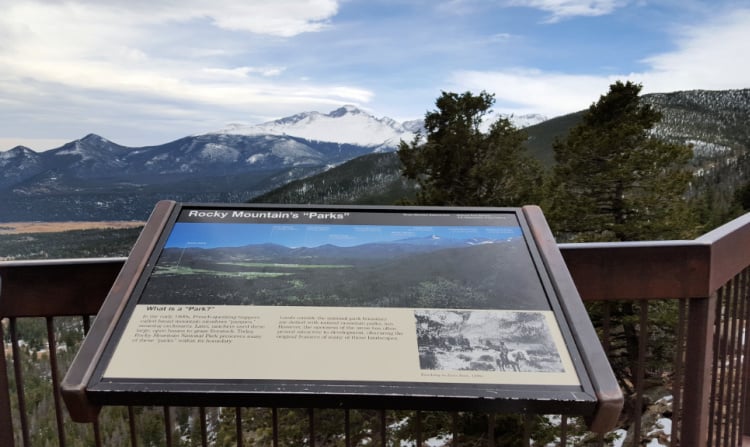
An Englishwoman and Rocky Mountain National Park
Isabella Bird recorded her impressions of Colorado’s mountains in a book, A Lady’s Life in the Rocky Mountains, waxing poetic about the pristine landscape and describing the hardships she endured to explore it.
She observed:
“The scenery up here is glorious, combining sublimity with beauty … This is an upland valley of grass and flowers, of glades and sloping lawns, and clumps of pines artistically placed, and mountainsides densely pine-clad … and the mountains breaking into pinnacles of bold grey rock as they pierce the blue of the sky … Deep, vast canyons, all trending westwards, lie in purple gloom.”
Bird explored the hard way: on horseback and on foot. Often alone. Today’s visitors have it a little easier. Rocky Mountain National Park is bisected by Trail Ridge Road, a paved highway that whisks you from lake to beaver pond to trailhead. But you won’t be alone.
Rocky Mountain National Park received more than 4.67 million visitors in 2019, although in 2020, due to COVID closures and restrictions, just 3.31 million!
Still impressive, when you figure it doesn’t open to vehicles until late May or early June and often closes by mid-October because snow blocks the roads. Yet no matter the season, the park is open 24 hours a day, 365 days a year, weather permitting. Summer and fall are the busiest seasons in the park.
National Geographic Adventure magazine named it one of America’s 10 best parks, calling it the “loftiest of all national parks,” and citing its accessibility for climbers.
Climbing is indeed a world-class pursuit here, but most visitors do it from the seat of an SUV. The smart ones get out and explore.

Meet Rocky Mountain National Park Ranger
Flash forward to another equally adventurous woman who also fell in love with Colorado, Park Ranger Kathy Brown. In 1971, her parents brought her here, and she never forgot it. She became a park ranger with the intent of ending up in Colorado one day.
That dream came true several years ago. She has worked among the redwoods in California and the fossils at Florissant Fossil Beds, west of Colorado Springs, but nothing has captured her affection in the same way.
“Even when I was a kid, these mountains just got into my head and my heart, and I never can stay away from them,” she says. “I think it’s the combination of the mountains and the forests, and the wildlife that’s here.”
She loves that the park offers something for everyone, from wheelchair-bound visitors to serious hikers.
She calls Trail Ridge Road “a thread through the wilderness” that takes visitors from the park-like valleys that are home to the towns of Estes Park on the east and Grand Lake on the west to the alpine meadow at 12,000 feet (3,658 m).
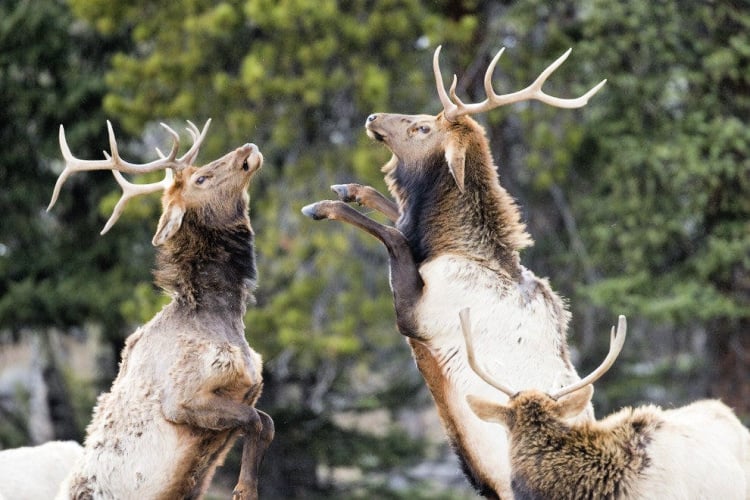
History of Rocky Mountain National Park
Established in 1915 as America’s tenth national park, thanks in part to the efforts of naturalist Enos Mills. In 1909 Mills wrote about the valleys and stunning peaks beyond Estes Park and campaigned for the area’s preservation.
Visitors can learn about the park’s creation at the park headquarters, the Beaver Meadows Visitor Center, where they can see exhibits, pick up a map or two, and catch a great introductory film.
At altitudes of up to 14,000 feet (4,267 m), the park’s peaks impede and create weather. A third of the park is above treeline, at about 10,000 feet (3,048 m). About 11,000 years ago, the first people visited the area, as far as archeologists can tell.
In 1879, gold and silver were found near the headwaters of the Colorado River, but they didn’t pan out. So ranchers began to settle here, although the harsh weather made it difficult to eke out a living. Then tourism began to blossom, along with lodgings and restaurants to accommodate visitors.
Here, elk, deer, and pronghorns graze; peregrine falcons dart after prey; and mountain lions roam the backcountry, along with bighorn sheep and black bears.
Marmots sun themselves on rocks. Beaver build their lodges and create ponds. Gray jays and ground squirrels beg tourists for food (resist!). Foxes and coyotes hunt small mammals and birds, such as the pudgy little pika (a relative of the rabbit) or the shy ptarmigan.
Most visitors start in Estes Park and many also choose to stay at the historic and haunted Stanley Hotel. Driving into town, the first tourist pile-up happens at the sign bearing the town’s name.
Why? Because the astonishing backdrop is the snowy Never Summer Range, with the town tucked at its base.
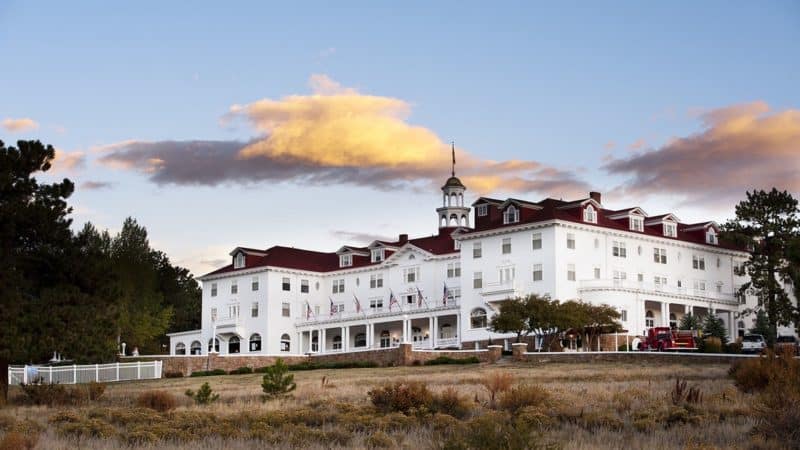
Rocky Mountain National Park Entrances
Rocky Mountain National Park has the highest paved roads in any national park in the United States.
Trail Ridge Road connects the two bookending mountain towns of Estes Park, Colorado (west) and Grand Lake (east). Fuel up in Estes Park and head east to Grand Lake (or vice versa). Allow at least three to four hours to drive it, with enough time for stops to take pictures and maybe for a short hike.
There are two entrances to the park on the Estes Park side: the aforementioned Beaver Meadows Visitors Center and the Fall River Visitors Center, the latter at the entrance to the old Fall River Road.
While Trail Ridge Road is paved, Fall River Road, the original road through the park, is not.
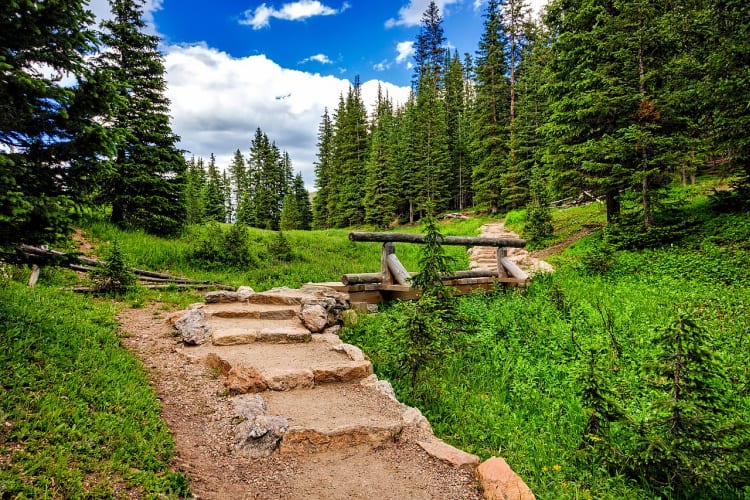
Drive Trail Ridge Road
Cresting at 12,183 feet, Trail Ridge Road is actually Highway 34 and known as the “highway to the sky.”
It is the highest continuous road in the United States and one of the most scenic and diverse roads one can experience. Be prepared for strong winds and rapid weather changes.
While driving in the mountains is always an adventure, the 48 miles (77km), from Estes Park to Grand Lake, on Trail Ridge Road actually climbs 4,000 feet in minutes across and through Rocky Mountain National Park. And yes, even in the heat of the summer, snow is always possible.
Trail Ridge Road normally opens the last week in May and closes at the end of October, weather permitting.
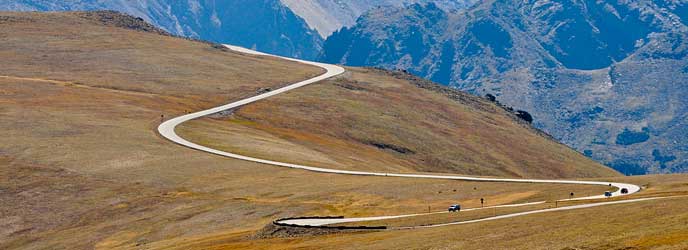
Adventure on Fall River Road
Fall River Road is open for a shorter time during the year and is less traveled than Trail Ridge. But it offers its own attractions, views, and perspective on the park. Savvy travelers go up Fall River Road and come back down Trail Ridge Road, to avoid repeating the entire experience.
It doesn’t take a 4-wheel-drive or high-clearance vehicle to navigate Fall River Road, but make sure your car is in good condition and take it slow. And fuel up before embarking on this road trip! There are no service stations up here. (Trailers and RVs aren’t allowed on this road.)
The top of Fall River Road, at 11,000 feet (3,353 m), intersects with Trail Ridge Road. At this juncture, there is another visitors’ center.
There also is a hiking trail carved out of the meadow to a point that is usually cold and windy — gusts of up to 200 mph (322 kph) have been recorded here. Yet it offers spectacular panoramic views of the Gore mountain range.
If you go up early or come down late, watch for herds of elk grazing not far from the roadways in the foothills. Don’t approach them. They look calm but can be dangerous when frightened. In a single day, you may remove your jacket for a sunny hike and watch a family have a snowball fight in shorts.
Drive-up into a thunderstorm, which turns to sleet, then snow, and drive back down through rain and into the sunshine again. In short, Rocky Mountain National Park is an ever-changing place.
“I’m so grateful someone had the foresight to set this apart,” ranger Brown says. “I think it’s vital that our nation has protected places like this.”
Her passion echoes the words of 19th-century traveler Isabella Bird. She called it “the great lone land” and “one of the most extraordinary spots on earth.”
Millions of people think she had it right.
Book This Trip
Start planning your adventure to the majestic Rocky Mountains today! You can find the best flight deals and easiest transportation bundles here through Kiwi. Next, you can check out insider tips on the top local restaurants, hotel or VRBO options and favorite hikes in the park on Travelocity and TripAdvisor.
- More helpful links:
- Rocky Mountain National Park
- Estes Park Chamber Resort Association
- Grand Lake Chamber
